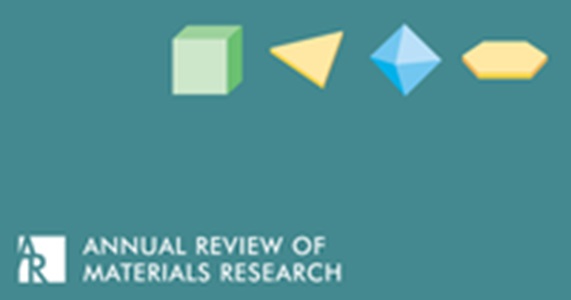材料设计的系统方法:过去,现在和未来
IF 10.4
2区 材料科学
Q1 MATERIALS SCIENCE, MULTIDISCIPLINARY
引用次数: 45
摘要
人们越来越意识到加速材料发现、设计、开发和部署的必要性。材料设计本质上是一种以目标为导向的活动,它将材料视为一个复杂的系统,其中包括在材料结构层次的多个尺度上与模型和实验相互作用的子系统。材料设计的目标是有效地反转过程路径、结构和材料特性或响应之间的定量关系,以确定可行的材料。我们首先简要讨论了构建材料的工艺-结构-性能关系的挑战,以及量化不确定性并通过分析和设计跟踪其传播的关键作用。简要介绍了利用归纳设计进行超高性能混凝土的实例研究。我们专注于材料设计与系统工程、不确定性量化和管理、优化以及材料数据科学和信息学的高度协作交叉点的重要最新方向和关键科学挑战,这对于推动基于系统的材料设计的持续进步至关重要。本文章由计算机程序翻译,如有差异,请以英文原文为准。
Systems Approaches to Materials Design: Past, Present, and Future
There is increasing awareness of the imperative to accelerate materials discovery, design, development, and deployment. Materials design is essentially a goal-oriented activity that views the material as a complex system of interacting subsystems with models and experiments at multiple scales of materials structure hierarchy. The goal of materials design is effectively to invert quantitative relationships between process path, structure, and materials properties or responses to identify feasible materials. We first briefly discuss challenges in framing process-structure-property relationships for materials and the critical role of quantifying uncertainty and tracking its propagation through analysis and design. A case study exploiting inductive design of ultrahigh-performance concrete is briefly presented. We focus on important recent directions and key scientific challenges regarding the highly collaborative intersections of materials design with systems engineering, uncertainty quantification and management, optimization, and materials data science and informatics, which are essential to fueling continued progress in systems-based materials design.
求助全文
通过发布文献求助,成功后即可免费获取论文全文。
去求助
来源期刊

Annual Review of Materials Research
工程技术-材料科学:综合
CiteScore
17.70
自引率
1.00%
发文量
21
期刊介绍:
The Annual Review of Materials Research, published since 1971, is a journal that covers significant developments in the field of materials research. It includes original methodologies, materials phenomena, material systems, and special keynote topics. The current volume of the journal has been converted from gated to open access through Annual Reviews' Subscribe to Open program, with all articles published under a CC BY license. The journal defines its scope as encompassing significant developments in materials science, including methodologies for studying materials and materials phenomena. It is indexed and abstracted in various databases, such as Scopus, Science Citation Index Expanded, Civil Engineering Abstracts, INSPEC, and Academic Search, among others.
 求助内容:
求助内容: 应助结果提醒方式:
应助结果提醒方式:


